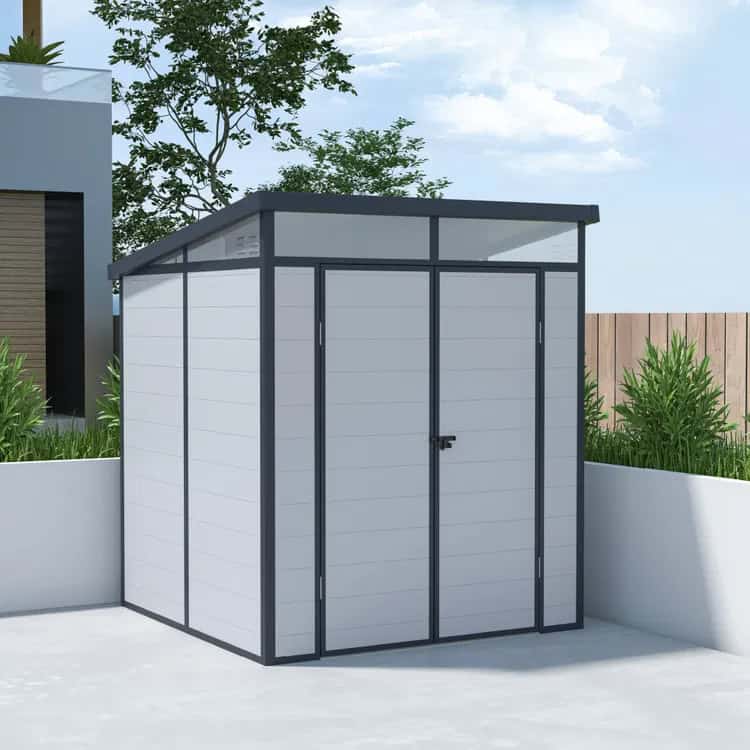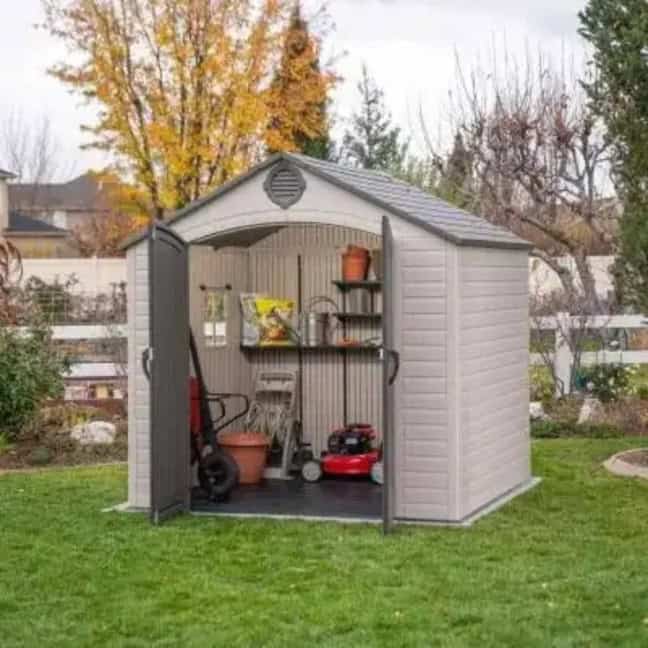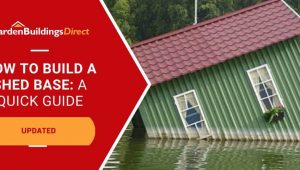Jump to:
Plastic shed maintenance may be minimal, but it still matters.
If a plastic shed were an adjective, it’d be low-maintenance. The powder-coated aluminium frame and durable plastic panels combination make up for it. In turn, there’s no danger of corrosion, rot or warping. Even so, a little effort goes a long way in keeping it functional and long-lasting.
In this post, we’ll share simple upkeep garden shed tips, as well as answer frequently asked questions.
Plastic Shed Maintenance Tips
Check your shed regularly
Make it a habit to inspect your shed now and then to see if there’s anything wrong.
The exterior part of your shed takes the most beating from the weather, making it more prone to dirt and damage. Just like you care for the inside, give the same attention to the exterior.
Check all sides of the walls, the roof, and the base, as these areas get hit hardest by the weather. And although plastic isn’t prone to rot or mould, it may crack due to sunlight exposure over time. If that happens, patch the area with fibreglass or similar plastic. For split seams, PVC pipe glue does the trick.
Keep the walls clean

Brush off the dust and residuals, such as mud, on the wall surface. Then, prepare your cleaning solution, such as a mixture of soap and water, and apply it to a clean cloth. Wipe all sides.
If your shed is rather large, opt for a garden hose for convenience and spray water onto its outer walls. Prepare a plastic bristle brush scrubber just in case you have to scrub away the stuck grime. Alternatively, use a power washer, if you have one, to speed up the cleaning process.
Tip: Mix ⅓ cup of laundry detergent with 6 gallons of water. A few cups of white vinegar mixed into the solution also work wonders in maintaining the gleam.
Look after the roof and gutters
The roof and gutters tend to collect a lot of debris over time, especially leaves, dust, and dirt. Use a push broom or hand brush to sweep off any debris sitting on top. Give it a rinse with a garden hose to wash away loose grime.
For tougher spots, use a liquid soap and a scrubber to thoroughly clean the roof. Once you’re done, spray down the soap and wipe it dry with a rag or squeegee.
During winter, don’t let snow pile up for too long—that added weight can cause damage. If you get a lot of snow, add roof-strengthening kits with extra steel rafters to support the shed.
As for the gutters, check for any leaves or mud and clear them out by hand or with a small scoop. Pour water through the gutter to see if it drains well; if it backs up, there’s still something blocking it.
Use a protectant spray
Plastic sheds can fade, crack, or become brittle over time due to sun exposure. To prevent this, apply a UV-protectant spray specifically designed for outdoor plastics.
Spray it evenly over the shed’s exterior, especially on sun-facing sides. Use a clean cloth to wipe it in and let it dry completely. Reapply every few months, or as often as the label suggests, to keep the surface smooth and protected.
Check the base and flooring

The base must stay level, dry, and well-drained. Clear away any mud, standing water, or plant growth that could cause moisture buildup.
If water pools near the base, add gravel or adjust the ground slope to improve drainage. Inside, seal or treat the floor to protect it from moisture and wear if you haven’t already.
FAQ
Can you power wash a plastic shed?
Yes, you can power wash a plastic shed. But if you have vinyl siding, avoid getting water up and under it; use a downward spray pattern instead. Alternatively, a bucket of soap and warm water works almost as well as a power washer.
How do you maintain a plastic shed?
To maintain a plastic shed, give the same amount of care to both the interior and exterior parts. Inspect the walls from all sides, the roof and the basement. This will help you find potential issues before they become serious.
Do plastic sheds get damp?
No, you won’t find a plastic shed going soft from moisture. But condensation can still form inside, and that can affect your shed’s other contents.
Do plastic sheds go brittle?
Yes! They can deteriorate over time as the UV in sunlight breaks down the polymers. This causes the material to fade, crack and go brittle.
Should plastic sheds be anchored?
Plastic sheds need to be anchored to the ground due to their lightweight design. Screws may hold in light gusts but aren’t reliable in heavy winds. Cable or straps, in contrast, that go over the roof and secure to anchors will keep it more secure.





